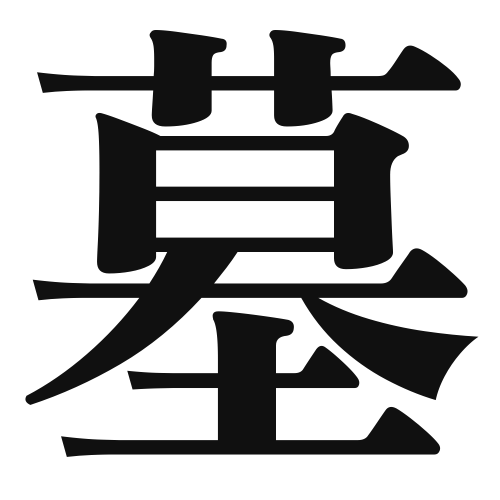1. Overview of Meaning
The kanji “墓” (pronounced “haka”) means “grave” or “tomb.” It refers to a place where the deceased are buried, serving as a memorial for honoring and remembering them.
2. Formation and Radical
Formation of the Kanji: The kanji “墓” is a compound character, combining elements that represent both the concept of a grave and the act of burying. It is classified as a compound ideograph (会意文字), as it combines meanings to convey the idea of a burial site.
Radical: The radical for “墓” is “土” (meaning “earth” or “ground”), which signifies the connection to the earth where graves are located.
3. Examples of Usage
Common Words and Phrases:
- 墓地 (bochi) – cemetery
- 墓参り (hakamairi) – visiting a grave
Example Sentences in Daily Conversation:
- 毎年、祖父の墓参りに行きます。 (Every year, I visit my grandfather’s grave.)
- 墓地は静かで、故人を思い出す場所です。 (The cemetery is a quiet place to remember the deceased.)
4. Synonyms and Antonyms
Similar Kanji:
- 塚 (tsuka) – mound or burial mound, which refers to a raised area of earth often used for graves.
- 遺骨 (ikotsu) – remains, which refers to the physical remains of a deceased person.
Antonyms:
- 生 (sei) – life, which represents the opposite of death and burial.
5. Cultural and Historical Background
Connection to Japanese Culture: In Japan, visiting graves is an important cultural practice, especially during festivals like Obon, when families honor their ancestors. The act of “墓参り” is a way to show respect and maintain a connection with the deceased.
Proverbs and Idioms: One common saying is “墓の中で静かにしている” (be quiet in the grave), which implies that once someone has passed away, they should be left in peace.
